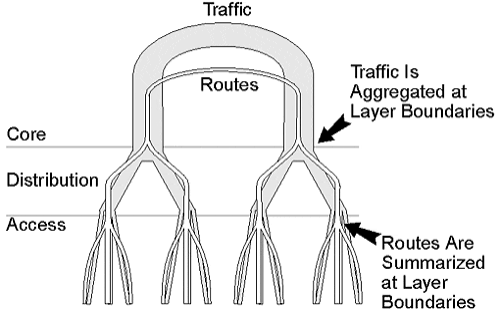CCIE Network Design FAQ: Applying the Principles of Network Design
Q1. What does hierarchy provide in a well-designed network?
Q2. What is the primary tool used to bound the area affected by network changes?
Q3. How can it be determined which links can be removed from a full mesh core network to decrease the number of links?
Answer: By looking at the normal traffic patterns and determining which points the majority of the traffic will flow between.
Q4. What provides ways around failure points in the network?
Q5. What two things are most desirable in a routing protocol?
Q6. What can a routing protocol do to decrease its burden to hosts that are not running routing on a network?
Q7. List the addressing problems that are caused by having multiple links to external networks.
- Addressing conflicts with partners
- Injecting multiple routes from external networks into your network
Q8. Given the network in Figure 4-10, how many routes do you think a core router will have in its table if no summarization is done?
Q9. Given the network in Figure 4-10, how many routes do you think a core router will have in its table if all possible summarization is done?
More Resources
